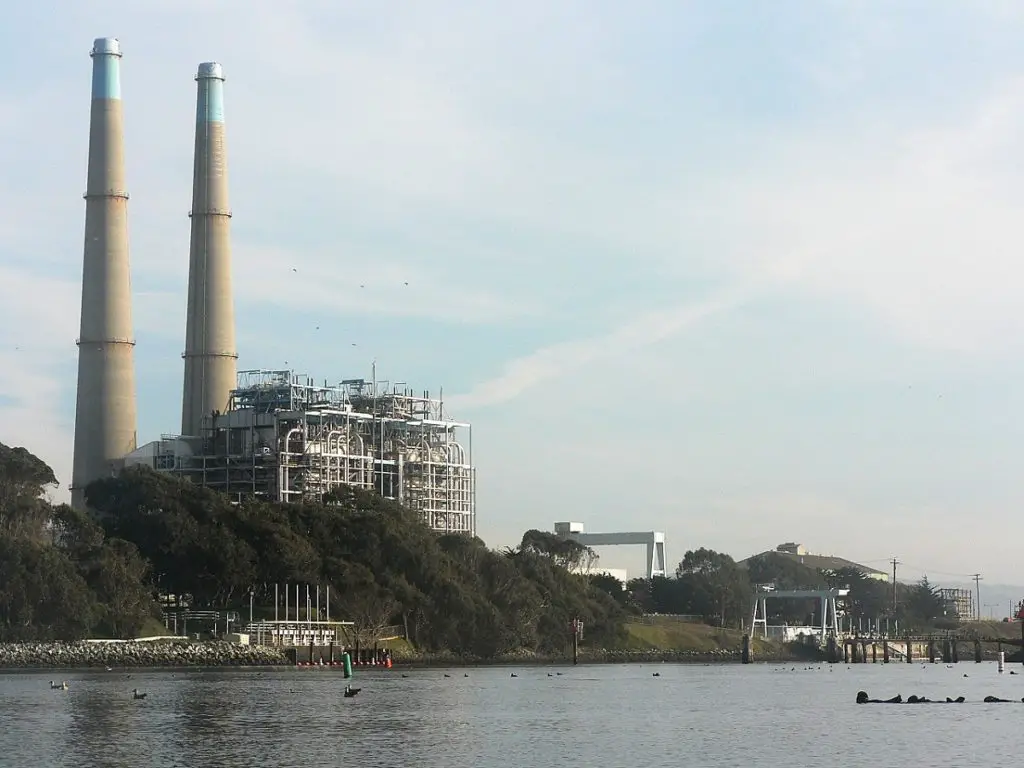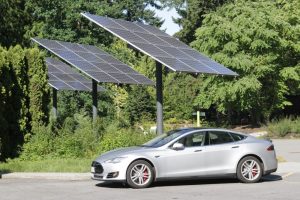Two 500-foot steel and concrete smokestacks loom over the old power plant on the harbor of Moss Landing, California. They cast an incongruous shadow over the idyllic seaside community, which counts snowy egrets, buffleheads, mallards, and sea otters among its tourist attractions.
The sprawling energy facility from which the flues rise is having a mega-makeover. It’s one of four gigantic lithium-ion storage projects being developed by California’s largest utility, Pacific Gas and Electric (PG&E).
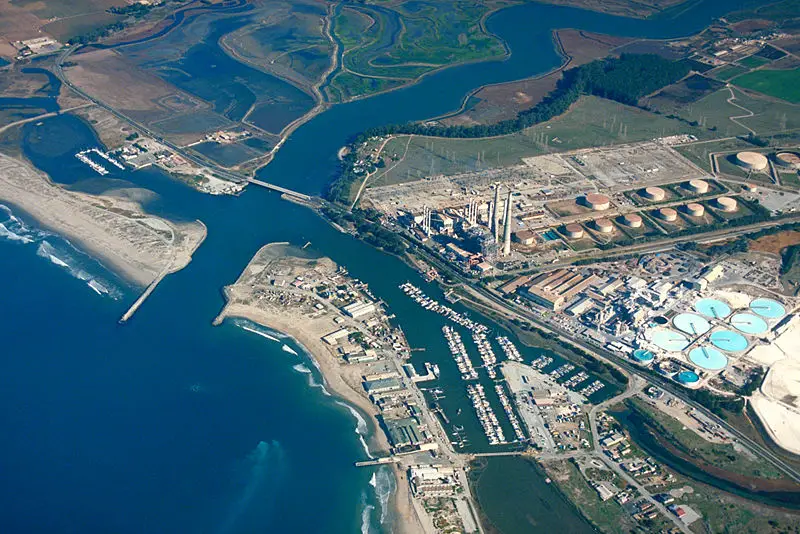
If state regulators sign off on the project, picturesque Moss Landing could be the site of the world’s largest lithium-ion battery project to date.
Proponents claim the facility – along with the other three projects PG&E wants regulators to approve – could balance fluctuating wind and solar energy in the California grid, thereby eliminating the need for base-load, coal and gas burning generators!
Contents
New Technologies Keeping the Hope Alive…
Practical energy storage is crucial to the success of any effort to make renewable energy a mainstream source of electricity. As more wind and solar energy goes online, utilities will need to store power to address demand when there is no wind or the sun isn’t shining.
That’s where facilities like those in Moss Landing are supposed to come in. PG&E says its four lithium-ion projects could add enough storage capacity to the grid to supply over 400,000 homes.
But there’s a hitch to this otherwise rosy picture.

Lithium-Ion Fails The Test…
For years now, US experts have claimed lithium-ion systems are still too expensive for applications requiring long-term storage. That’s because many forms of the battery rely on hard-to-procure materials, like cobalt and nickel.
Perhaps even worse, lithium-ion storage systems have in the past demonstrated a disturbing tendency to burst into flames.
In fact, an increasing number of battery experts have given-up on large-scale lithium-ion systems altogether. Many have resigned themselves to the hope that something better will come along even as the consequences of climate change become more apparent.
Right now, three exciting technologies are keeping that hope alive.
1/ IBM’s Seawater Battery Technology
Tech giant IBM recently announced a new battery for EVs, consumer devices, and electric grid storage. The company says its battery could be built from common minerals and compounds found in seawater.
IBM Research claims the battery is non-flammable and is able to recharge 80 percent of its capacity in five minutes.
Young-hye Na, materials innovation manager for IBM Research’s battery division, says IBM is working with Mercedes Benz and the Japanese company, Central Glass, to refine the battery’s electrolyte. Sidus, a Silicon Valley battery startup, will do the testing.
IBM has not revealed technical information about its battery’s chemistry, configuration, or design. The company’s reticence has become a source of frustration for many industry observers, but experts say its published specifications are “staggering.”

(Photo: Vinoo202/Wikipedia)
The company may still need to develop extraction techniques to harvest the needed quantities of the ocean’s dissolved substances for the battery, says Na. These materials may include magnesium, potassium, boron, strontium, and fluoride.
“Extracting materials from seawater would still remain more environmentally friendly compared to the environmental impacts of terrestrial mining,” Na says.
2/ Startup Looks to a Return to Lithium-Metal
Meanwhile, in Bothell, Washington, engineers and executives at the energy storage company, XNRGI, are looking to bring lithium-ion’s predecessor, lithium-metal, back into the mainstream.
The startup has developed the first-ever silicon chip-based lithium-metal rechargeable battery technology.
The company claims the battery’s performance is exponentially more efficient than any other lithium battery.
Previous lithium-metal battery designs had proven too difficult to commercialize. Lithium is highly reactive, and the titanium disulfide earlier manufacturers used for the cathode was expensive.
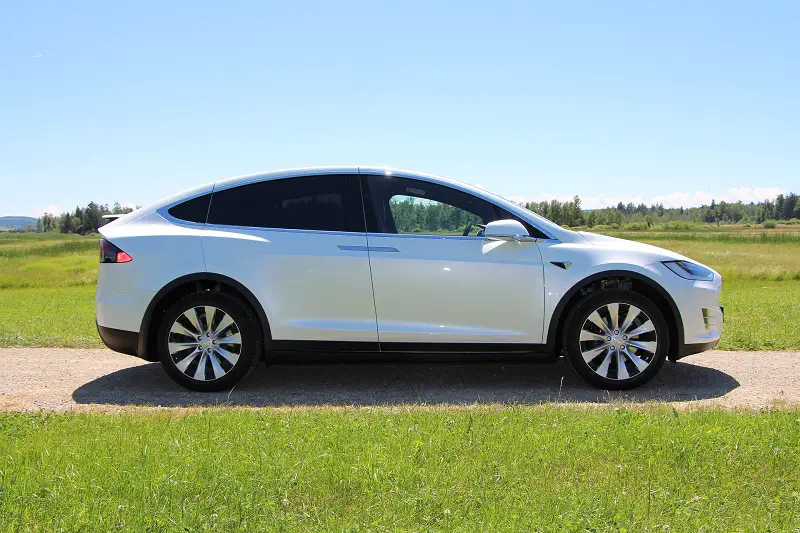
XNRGI’s R&D team has managed to muzzle the reactivity of metallic lithium. The company says it achieved this goal by depositing it into a substrate of silicon coated with thin films and etched with millions of tiny cells.
The 3D substrate greatly increases the anode’s surface area compared with a traditional lithium-ion’s two-dimensional anode.
“We’re taking proven chip manufacturing steps and applying them to this battery,” says XNRGI CEO Chris D’Couto. “We’re taking something from one industry and applying it to another industry. We’re not inventing anything on that front.”
The company plans to begin limited commercial production of its lithium-metal batteries, for shipment to electric-vehicle and consumer-electronics customers this year.
‘Exponentially more powerful’ should mean less batteries and that will result in lighter, more efficient vehicles. But the opportunities don’t stop there…
Last year, XNRGI signed an agreement to form a joint venture with the Canadian startup Cross Border Power, to sell and distribute its batteries to utility customers in North America, according to IEEE Spectrum. Perhaps PG&E will be their first big customer?
3/ Researchers Claim Lithium-Sulfur Breakthrough
Meanwhile, across the oceans in lands far, far away, comes perhaps the most exciting development of all.
Researchers from Australia, Belgium, and Germany have developed a new design for lithium-sulfur batteries. They claim their battery could – in theory – store six times more energy than lithium-ion systems.
Given the enormous possibilities, scientists and engineers have been looking into the potential of lithium-sulfur batteries for some years. But, until now, such batteries have been impractical.
The high storage capacity of lithium-sulfur batteries means that the electrode swells up to almost double its size when fully charged.
The cycle of swelling and shrinking as the battery charges and discharges leads to a progressive loss of cohesion of particles. The batteries literally break apart under stress.
Monash University researcher Mahdokht Shaibani and her colleagues say their design allows lithium-sulfur batteries to be charged and discharged hundreds of times without breaking down.
The conventional way of producing batteries creates a continuous dense network of binder across the bulk of the electrode, leaving little free space for movement, Shaibani explains.
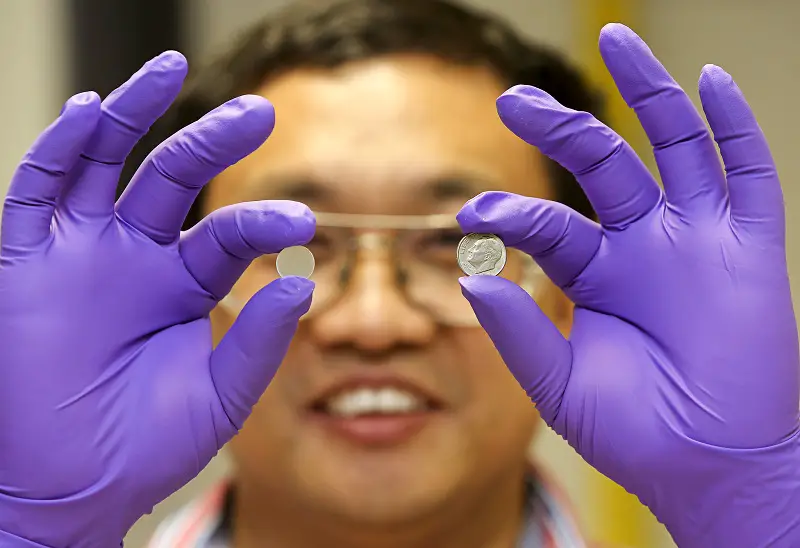
“To make sure our batteries would be easy and cheap to manufacture, we used the same material as a binder but processed it a little differently,” Shaibani writes in an article for The Conversation. “The result is a web-like network of binder that holds particles together but also leaves plenty of space for material to expand.”
Shaibani says the expansion-tolerant electrodes can efficiently accommodate cycling stresses, allowing the sulfur particles to live up to their full energy storage capacity.
“We hope to have a commercial product ready in the next two to four years,” she says, adding that she and her colleagues are working with industry partners to scale up the breakthrough.
The Need for Radical Change
Today’s battery storage technology works best in a restricted role. Most act as a substitute for “peaking” power plants, according to a 2016 analysis by researchers at MIT and Argonne National Lab. These are small facilities, often powered by natural gas.
Not only is lithium-ion technology too expensive for this role, but inadequate battery life limits its capacity to fill gaps during months when wind and solar generation dips.

Of course, cheaper and better grid storage is possible. Researchers are vigorously exploring possibilities even as the old stalwarts of fossil fuel resist progress. The Moss Landing power plant alone should suffice as proof of earnest research and development efforts.
But the underlying fear is that market forces and politics aren’t working fast enough to encourage the commercialization of new technologies.
That’s an urgent problem, given the pace at which we need to cut emissions to avoid the greatest threats of climate change.
Sweeping, radical change is needed, and that doesn’t come often in an energy industry deeply entrenched in old school politics and capitalism.
What do you think?

